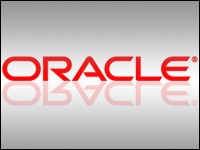
Oracle has entered the product lifecycle management (PLM) niche with a flourish through its acquisition of best-of-breed vendor Agile Software.
While there are other active PLM vendors, Agile offers a difficult-to-replicate line of products and functionality that address product innovation and the introduction process; facilitate the sharing of product specifications and configurations; and support collaboration across the supply chain.
It is particularly strong in the high-tech, life sciences, industrial manufacturing and consumer packaged goods verticals.
Oracle will acquire the firm for US$495 million in cash or $8.10 per share — a 14 percent premium on the company’s closing price prior to the acquisition. Since the deal was announced, shares of Agile are up 88 cents to $7.96, noted Frederic Ruffy, an analyst with the investor education firm Optionetics.
Benefiting Agile
To be sure, Agile shareholders have reason to celebrate. The company is a specialty provider of software that can count such conglomerates as McDonald’s and Micron Technology among its 10,000 customers.
“Agile has a history of being successful in the high-tech sector and in high-tech related portions of other industries, such as the automotive sector’s electronic component space,” Ed Miller, president of CIMdata, told CRM Buyer. “With the acquisition behind it, Agile should be able to use these product lines it has already developed and fine tune them for other industries.”
As for Agile’s customers — possibly nervous about their existing investments in the vendor’s technology — they should take a deep breath, he suggests. In this particular deal, Oracle is acquiring best-of-breed knowledge and technology in order to expand its market share. Its plans include not only continued investment in the Agile product line, but also support for standalone implementations.
Boosting PLM Presence
However, it will be Oracle that will reap the greatest gains from this acquisition — the latest in a multibillion dollar string of deals it has completed over the last few years.
Oracle plans to market Agile in both the Oracle and non-Oracle environments. It will continue to invest in a complementary product, the Oracle Product Information Management Data Hub, and integrate that with Agile PLM.
Other than that product line, Oracle has had little to do with PLM. The related functionality it has provided has been piecemeal — found in bits and pieces of other applications.
In short, the Agile buy gives Oracle a substantial boost in the PLM space, Miller said. “Oracle is not only getting good technology that has been proven over last several years — it is also getting a field organization of people that understands PLM.”
It will provide Oracle with opportunities to cross-sell to Agile’s customer base — but, perhaps more importantly, expand into the PLM space as a legitimate vendor in its own right, he explained. Indeed, as this segment of the industry continues to grow, this is perhaps just as important as Agile’s 10,000 strong user base.
Growing Footprint
PLM experienced a stronger than expected year in 2006, having grown 10.4 percent to reach $20.1 billion last year, according to statistics just released by CIMdata. CIMdata forecasts that PLM investments will continue to climb over the next five years, increasing at a compound annual growth rate of approximately 8.5 percent to exceed an estimated $30 billion by 2011.
What’s more, the scope of PLM continues to evolve and expand, the firm found, extending its reach from product planning and design to production, service and product support.
PLM’s growing footprint in the enterprise has integrated previously isolated disciplines and pockets of automation into the overall IT backbone, Miller noted.
It has become the foundation of many business initiatives, including strategic product planning, integrated product development, design collaboration, supply chain management, digital manufacturing and global resource utilization, he said.
Head to Head With SAP
Other enterprise vendors are also beefing up their PLM holdings. The Agile deal follows acquisitions by international competitors Siemens of Germany and Dassault Systemes of France of Agile Rivals UGS and MatrixOne, Optionetics’ Ruffy told CRM Buyer.
The vendor Oracle most likely had in mind when it pursued the acquisition with Agile is, of course, SAP.
“Profitable product innovation is critical to product-based industries, making PLM one of the fastest growing application segments,” said Oracle President Charles Phillips. “The addition of Agile, which will serve as the foundation of our PLM offering, will further Oracle’s strategy of delivering industry-specific enterprise applications and allows us to offer yet another strategic application to SAP customers.”
SAP opted earlier this year to build its own PLM functionality rather than partner or buy it, AMR Research Chief Research Officer Bruce Richardson told CRM Buyer. By acquiring Agile, Oracle now appears to have a head start.
However, the primary initial target for Oracle will be selling Agile to the Oracle base. “It’s going to get harder for Agile to penetrate SAP accounts — especially if the CIO has any say over PLM purchases,” he noted.
Oracle may have a better chance of articulating its PLM vision once the deal closes. “SAP is reluctant to offer much in the way of vision,” Richardson commented. “They don’t like to talk more than six to twelve months out.”
The larger picture looks even better for Oracle.
“Oracle’s goal is to shift the world from dependence on a single vendor — SAP — and towards a world of heterogeneous applications/computing,” Richardson added. “SAP typically responds by trying to figure out how to remove the foreign bodies — e.g., Oracle — from its client base.”
Also, it may be difficult for SAP to duplicate Agile’s functionality in house — or even through another acquisition. Richardson pointed to SAP’s recently announced decision to acquire OutlookSoft, seen by some as a countermove to Oracle’s acquisition Hyperion.
“While OutlookSoft covers some of the functionality of Hyperion, no one else does exactly what Agile provides,” he concluded.





















































